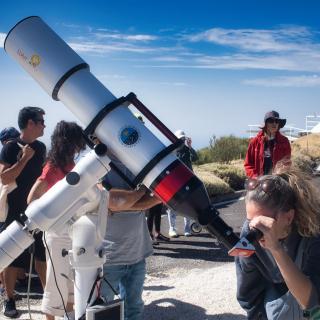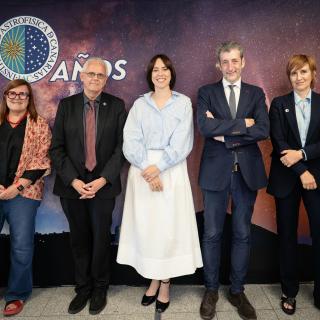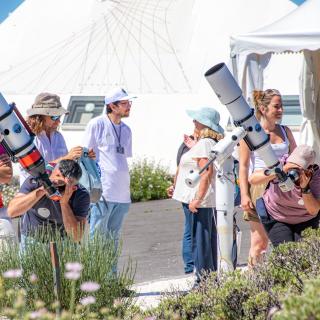Astronomers Conrado Carretero, Alexandre Vazdekis, César González, and John E. Beckman, from the Instituto de Astrofisica de Canarias (Spain), together with Vicent Quilis of the University of Valencia (Spain), have discovered a galaxy which has clearly been involved in a collision, some 650 million light years away from the Earth. This is the furthest case of a collision between two isolated galaxies which has ever been studied in depth. The collision occurred some 5000 million years ago, when a very massive isolated elliptical galaxy “swallowed” a companion galaxy ten times smaller. The energy released in the impact was the equivalent of the simultaneous explosion of a thousand trillion trillion trillion (one followed by 39 zeros) bombs each with the yield of the Hiroshima atom bomb explosion.
By using different astrophysical techniques simultaneously, the astronomers have found the waves produced after the impact, which are analogous to the waves produced on the surface of a pond when a stone is thrown into it. As further proof they have found that in the zones of the elliptical galaxy where these waves are present, new stars are forming as a result of the dynamical processes caused by the waves.
This study by a team of Spanish astrophysicists will be published on September 10th in The Astrophysical Journal Letters, although it is already available on the Internet (http://xxx.lanl.gov/pdf/astro-ph/0608012). The discovery opens up new methods for researching the origins and the evolution of galaxies, and specifically the role of collisions between them in the course of their evolution. According to the accepted scenario for cosmic evolution, starting from the Big Bang, collisions and the resulting mergers between galaxies have been one of the essential mechanisms for building up large galaxies such as the Milky Way.



